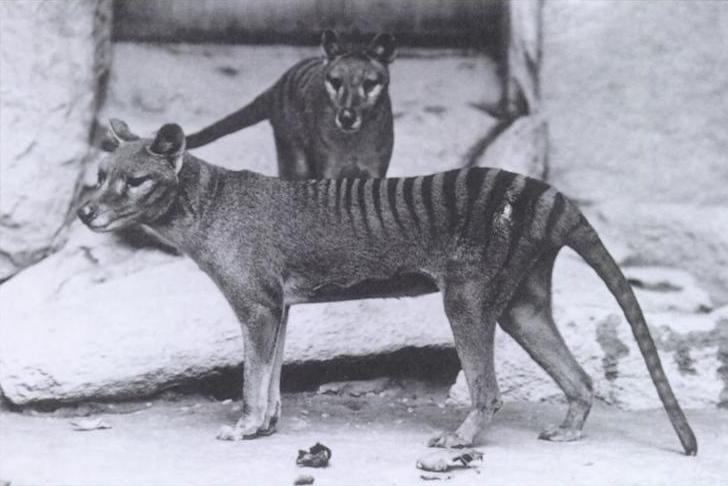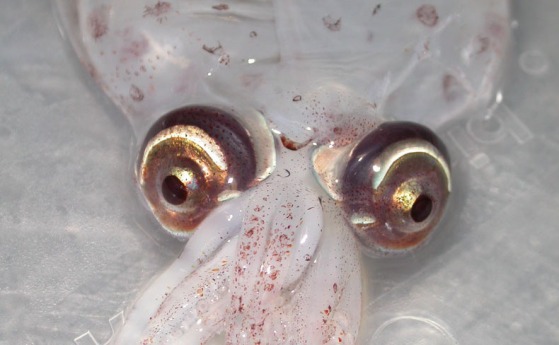 Are we alone in the universe? It all comes down to whether intelligence is a probable outcome of natural selection, or a fluke. Is evolution repetitive and predictable? If evolution repeats itself, independently converging on similar outcomes, our evolution seems likely. But 4.5 billion years of evolutionary history shows that many key events- not just the evolution of intelligence, but events preceding it, like the evolution of animals, complex cells, photosynthesis, life itself- were unique. The evolution of intelligence may, therefore, be unlikely. Like winning the lottery, only less likely.
Are we alone in the universe? It all comes down to whether intelligence is a probable outcome of natural selection, or a fluke. Is evolution repetitive and predictable? If evolution repeats itself, independently converging on similar outcomes, our evolution seems likely. But 4.5 billion years of evolutionary history shows that many key events- not just the evolution of intelligence, but events preceding it, like the evolution of animals, complex cells, photosynthesis, life itself- were unique. The evolution of intelligence may, therefore, be unlikely. Like winning the lottery, only less likely.
The universe is astonishingly vast. The Milky Way has over 100 billion stars, and there are around 100 billion galaxies in the visible universe. That’s just the tiny fraction of the universe we can actually see. Huge, possibly infinite gulfs of space exist beyond, far enough away that there hasn’t been time for the light from those stars to reach us. Even assuming Earthlike worlds are rare, the sheer number of planets- there as many planets as stars, maybe more- suggests that a lot of life is out there. So where is everyone? This is the Fermi Paradox: our universe is vast, and old, with ample time for intelligent life to evolve, but there’s no evidence of anyone else out there.
We can’t study alien worlds to know if they’re likely to evolve intelligence. But what we do have is billions of years of Earth’s history, and we can study the fossils and living things produced by that history, to see where life repeats itself, or doesn’t.

Striking examples of convergence do exist in evolution. The Tasmanian wolf was a wolf-like creature that filled the predator niche in Australia, but it has a kangaroo-like pouch. It evolved from marsupial stock- as did marsupial moles, marsupial anteaters, and marsupial flying squirrels. In fact, Australia’s entire evolutionary history, with mammals taking over and diversifying after the dinosaur extinction, parallels other continents. Other striking cases of convergence include dolphins and extinct ichthyosaurs, which evolved similar streamlining to slice through the water, and the birds, bats, and pterosaurs, which each evolved wings and flight.

You also see convergence in individual organs. Eyes evolved not only in vertebrates, but in arthropods, octopi, scallops, worms, and jellyfish. Vertebrates, arthropods, octopi and bristle worms independently evolved jaws. Legs were likewise invented convergently in the vertebrates, arthropods, and mollusks. In fact, several kinds of fish- tetrapods, frogfish, skates, mudskippers- specialized their fins for walking.
But here’s the catch. All these examples of convergence exist within just one group of organisms- the Bilateria. Bilaterians are complex animals, with left-right symmetry, a mouth, a gut, a nervous system. Once they evolve, we see different animals evolving similar solutions to similar problems. But the evolution of the bilaterian body plan that makes this possible was a unique innovation- complex animals evolved once in life’s history.

The argument that evolution tends to repeat itself makes sense- if you only focus on the places where it does repeat itself, like marsupial wolves, eyes, jaws, and soforth. But it’s a case of confirmation bias. If we only study cases of convergence, we’ll arrive at the idea that convergence is everywhere, and evolutionary history is likely to repeat itself. But if you start looking for nonconvergences- places where evolution hasn’t repeated itself, you’ll find them.
Surprisingly, many of the most critical events in evolutionary history are unique. One is the vertebral column that lets large animals exist on land. But only vertebrates evolved this particular kind of skeleton (curiously, the jointed exoskeleton, which underlies the most diverse group of animals, the insect, is also unique). The complex cells all animals and plants are built from- eukaryotic cells, with nuclei and mitochondria- evolved only once. Sex evolved once. Photosynthesis, which increased the energy available to life, and filled the atmosphere with the oxygen needed by complex animals, is an evolutionary one-off. For that matter, so is human-level intelligence. There are marsupial wolves and moles, but not marsupial humans.

Furthermore, these unlikely events depend on one another. Humans couldn’t evolve without vertebrae to let fish move onto land. Skeletons couldn’t evolve before complex animals existed. Complex animals required complex cells. Complex cells didn’t exist until photosynthesis filled the world with oxygen. And nothing could happen without the evolution of life: a singular event among singular events. All living things come from a single ancestor: as far as we can tell, life only happened once.
Strikingly, these events seem to take an extraordinarily long time. Photosynthesis didn’t evolve until around 1.5 billion years after the Earth formed, complex cells after 2.5 billion years, animals after 3.9 billion years, and human intelligence, 4.5 billion years later. That these innovations are so clearly useful and yet took so long to evolve implies that they are also highly improbable.
Because so many key innovations are one-offs, it seems likely that these are fluke events, low probability events that act like a series of chokepoints in evolutionary history. The emergence of intelligence isn’t like winning the lottery- it’s like Earth won the lottery not just once again, and again, and again, and again. On other worlds, such critical adaptations might evolved too late for intelligence to emerge before the sun went nova— or not at all. Let’s say there are seven innovations that are both critical and unlikely- the origin of life, photosynthesis, complex cells, sex, complex animals, skeletons, and intelligence, each with a 10% chance of evolving. The odds of an Earthlike planet evolving intelligence would be one in 10 million. But such adaptations could be even more improbable- photosynthesis required a suite of innovations in proteins, pigments, and membranes. Similarly, bilaterian animals result from multiple innovations. So maybe such critical, complex adaptations evolve just 1% of the time. If so, intelligent life would appear on just one in 100 trillion worlds. And if highly habitable worlds are rare, we might be the only intelligent life in the galaxy— or the visible universe.
If an infinite number of monkeys hit the keys on a typewriter, one of them writes Hamlet. In the same way, given a seemingly infinite (or for all we know, actually infinite) number of planets, if natural selection plays around with DNA long enough, one of those planets is likely to have a string of lucky breaks and evolve intelligence. What might that world that look like? It would look an awful lot like Earth’s evolutionary history- a series of remarkable and unique innovations like photosynthesis and complex cells.
And yet, we’re here. That has to count for something, right? If evolution only gets lucky one in a trillion times, what are the odds we happen to be on the incredibly improbable planet where it actually happened? In fact, the odds of us being on that lucky world are 100%. Because obviously we couldn’t have this conversation on one of those other worlds that didn’t first evolve photosynthesis, complex cells, or animals. This is the anthropic principle: the history of Earth must have been such that intelligent life could evolve, otherwise we wouldn’t be here to wonder about it.
